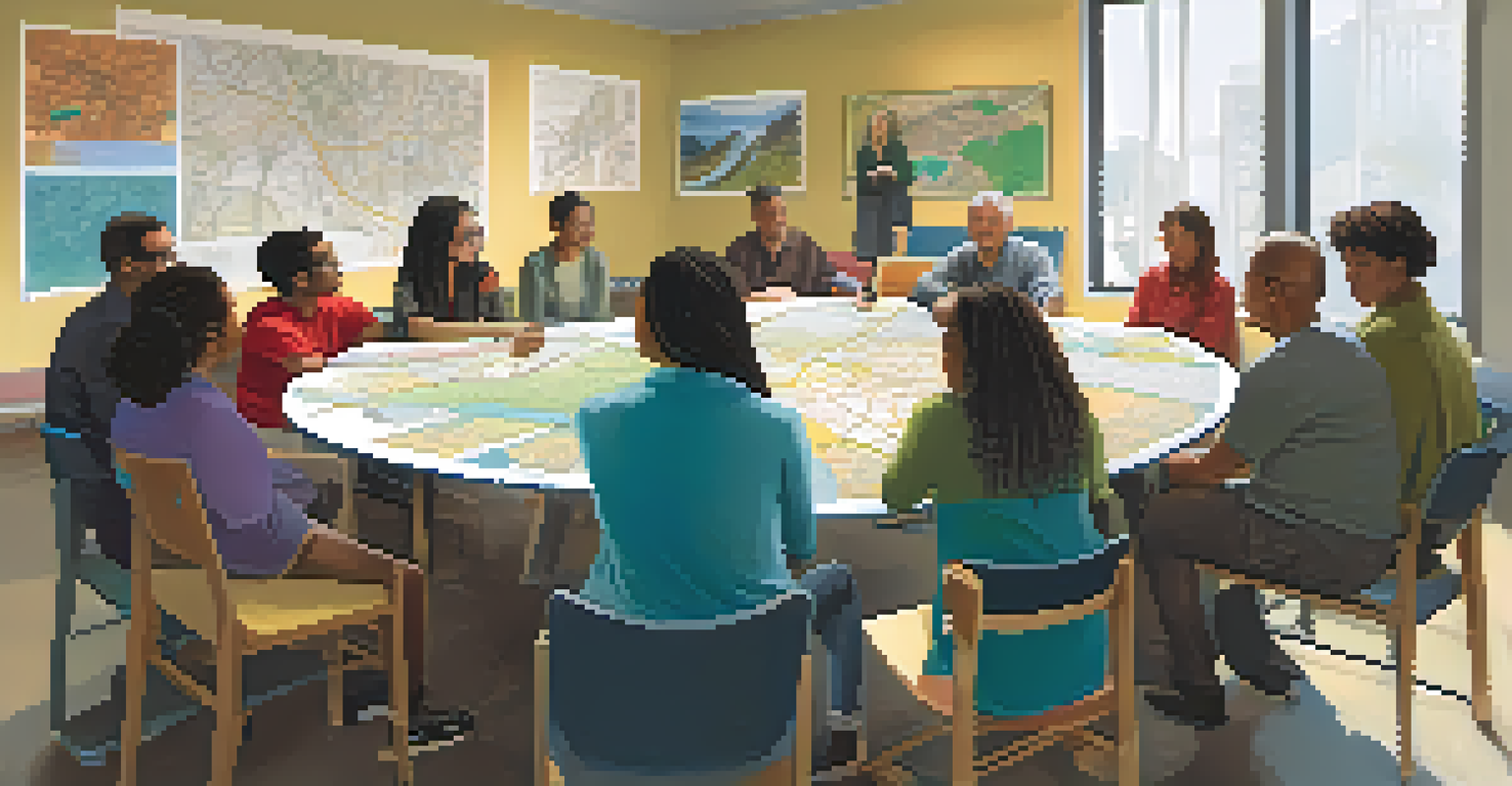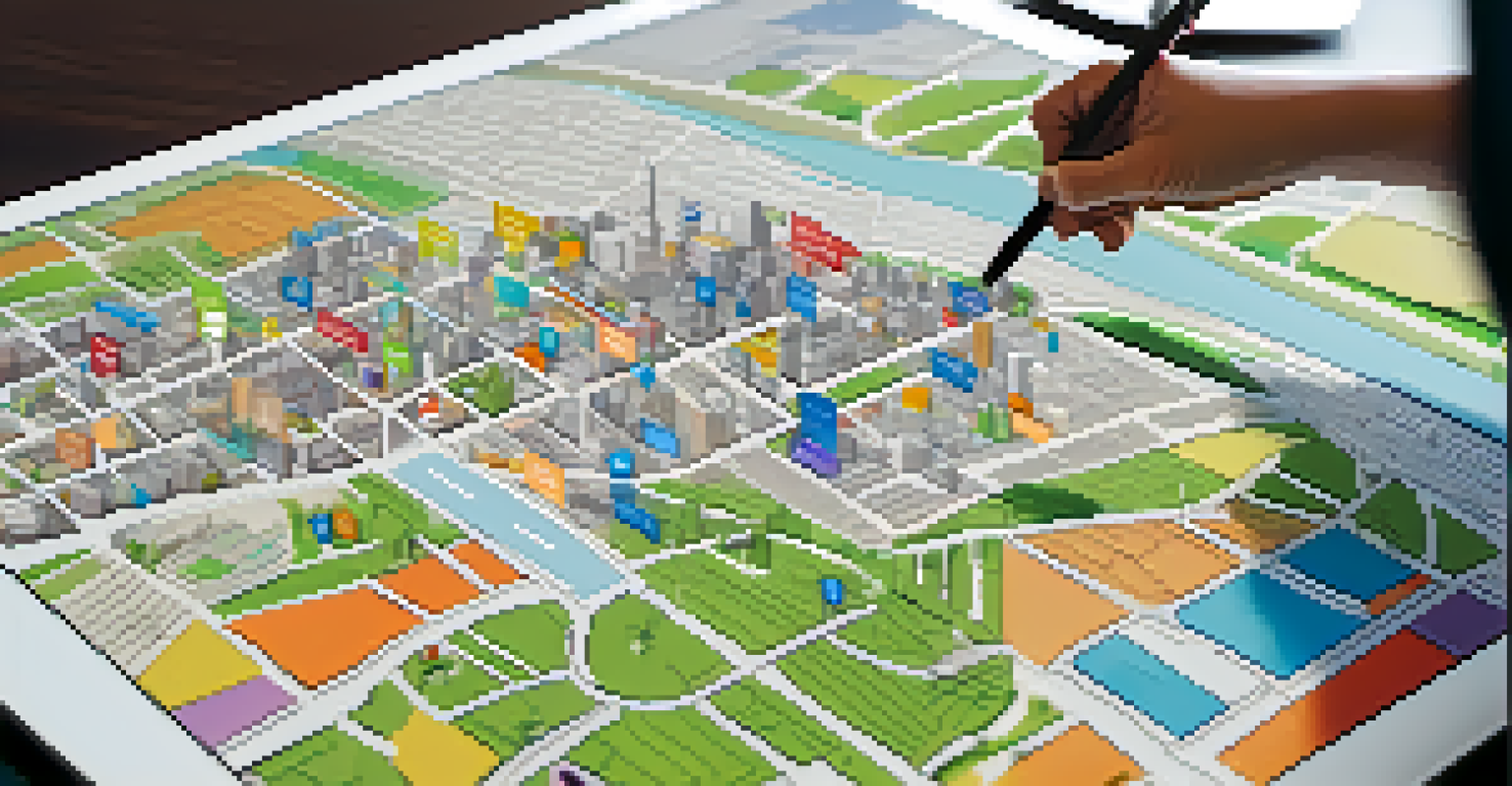How Public Engagement Shapes Urban Planning for Communities

Understanding Public Engagement in Urban Planning
Public engagement in urban planning involves involving community members in decision-making processes that affect their environment. This means actively seeking out the opinions, experiences, and needs of residents to shape the design and function of their neighborhoods. By prioritizing public input, planners can create spaces that truly reflect the desires of the community rather than imposing top-down solutions.
The best way to predict the future is to create it.
When communities are engaged, they tend to feel more connected to their neighborhoods, fostering a sense of ownership and pride. This shared responsibility often leads to residents being more proactive in maintaining and improving their surroundings. Furthermore, when people see their ideas implemented, it boosts trust in local government and encourages future participation.
For instance, cities like Portland, Oregon, have successfully implemented public forums and workshops to gather feedback on urban developments. These initiatives ensure that diverse voices are heard, from long-time residents to newcomers, creating a more holistic approach to urban planning.
The Benefits of Community Involvement
Involving the community in urban planning offers numerous benefits that go beyond just aesthetics. One significant advantage is the ability to identify and address specific local issues that planners may overlook. When residents share their firsthand experiences, planners can better understand the challenges facing their neighborhoods, leading to more effective solutions.

Moreover, community engagement can help prioritize projects that matter most to residents. For example, if a neighborhood struggles with traffic safety, residents can advocate for better crosswalks or bike lanes. This direct input ensures that resources are allocated in ways that truly enhance community well-being.
Engagement fosters community pride
Involving residents in urban planning cultivates a sense of ownership and pride in their neighborhoods.
Additionally, fostering a collaborative environment encourages innovation. When diverse perspectives come together, they can spark creative ideas that might not emerge in a more traditional planning setting. This collaborative spirit can lead to unique solutions, such as community gardens or pop-up parks, that enhance the urban landscape.
Challenges of Public Engagement in Urban Planning
While public engagement is critical, it’s not without its challenges. One notable issue is ensuring that all voices are heard, particularly those from marginalized communities. Often, these groups may lack access to decision-making processes due to language barriers, socioeconomic factors, or lack of resources, leading to an incomplete representation of community needs.
Public participation is a right, not a privilege.
Additionally, the sheer volume of opinions can be daunting for planners. Sifting through diverse perspectives and finding common ground requires time and effort. It’s a balancing act to ensure that all feedback is taken into account without delaying project timelines excessively.
Finally, there can be skepticism about whether public input will genuinely influence outcomes. If residents feel that their voices are not valued or that decisions are predetermined, they may disengage. Building trust through transparency and consistent communication is essential to overcoming this barrier.
Innovative Approaches to Public Engagement
To enhance public engagement, cities are adopting innovative approaches that leverage technology and creativity. For instance, online surveys and interactive mapping tools allow residents to share their thoughts and ideas from the comfort of their homes. This opens up participation to a broader audience, including those who may not attend in-person meetings.
Social media platforms also play a crucial role in modern engagement strategies. Cities can use these channels to share information, gather feedback, and keep the community informed about ongoing projects. This real-time interaction fosters a sense of community and encourages dialogue around urban planning issues.
Technology enhances participation
Digital tools and platforms are revolutionizing how communities share their input and engage with urban planning processes.
Moreover, creative outreach methods, such as community art projects or neighborhood block parties, can draw people in and inspire participation. By making the engagement process fun and accessible, planners can create a more inclusive environment where everyone feels welcome to contribute.
Case Studies: Successful Public Engagement Examples
Several cities across the globe have exemplified successful public engagement in urban planning. For example, Barcelona’s participatory budgeting initiative allows residents to decide how a portion of the city budget is spent, empowering them to directly influence public projects and services. This approach not only enhances civic participation but also fosters a sense of community ownership.
In Chicago, the 'Your Voice, Your City' initiative encourages residents to share their ideas and concerns through a dedicated online platform. This transparency in the planning process has led to increased community involvement and has resulted in projects that reflect the true needs of the city’s diverse population.
These case studies highlight the positive impact of genuine public engagement. When communities are given the tools and opportunities to voice their needs, urban planning becomes a collaborative effort that benefits everyone.
The Role of Technology in Urban Planning Engagement
Technology has revolutionized how communities engage in urban planning, making it easier than ever for residents to participate. Mobile apps and digital platforms allow individuals to voice their opinions, report issues, and provide feedback on local projects instantly. This immediacy can lead to quicker responses from planners and more dynamic conversations.
Moreover, data visualization tools can help illustrate complex planning concepts in an accessible way. For example, using 3D models or interactive maps can help residents visualize proposed changes to their neighborhoods, making it easier to understand the potential impact. This clarity fosters more informed discussions and decision-making.
Inclusivity is essential in planning
Ensuring that all voices, especially marginalized ones, are heard is crucial for creating effective and representative urban solutions.
However, while technology enhances engagement, it’s crucial to ensure that it doesn’t create a digital divide. Not everyone has equal access to technology, so planners must balance online tools with traditional engagement methods to ensure inclusivity.
Looking Ahead: The Future of Public Engagement in Urban Planning
As urban areas continue to grow, the need for effective public engagement in planning will become even more critical. Planners must adapt to the changing dynamics of communities and find new ways to involve residents. This could mean integrating more flexible engagement strategies that evolve with community needs and preferences.
Additionally, fostering partnerships between local governments, nonprofits, and community organizations can enhance engagement efforts. Collaborative initiatives can mobilize resources, expertise, and outreach capabilities, ensuring that diverse perspectives are represented in the planning process.

Ultimately, the future of urban planning lies in the hands of the communities themselves. By prioritizing public engagement, cities can build vibrant, inclusive spaces that reflect the values and needs of their residents, paving the way for sustainable and resilient communities.